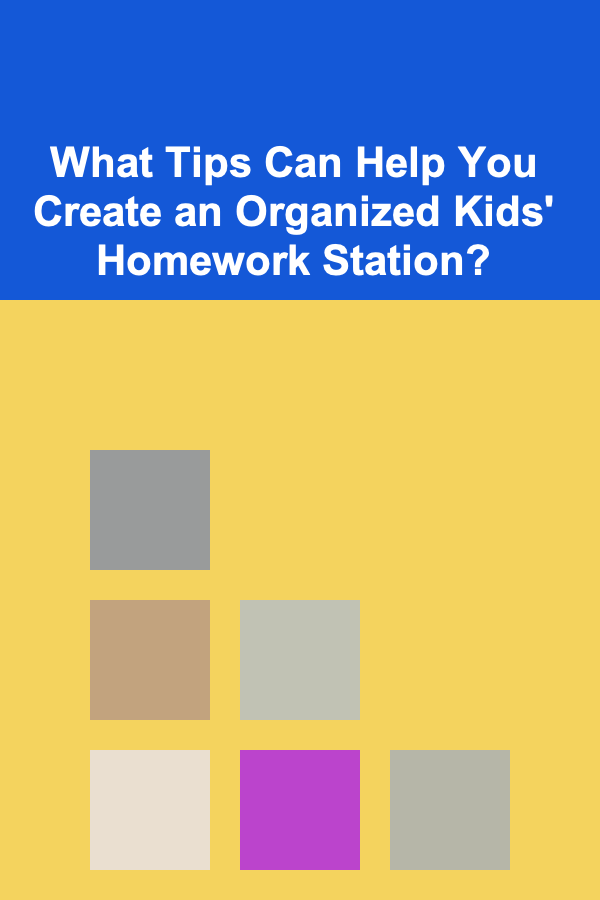
10 Tips for Selling Your Printable Board Game Designs Online
ebook include PDF & Audio bundle (Micro Guide)
$12.99$11.99
Limited Time Offer! Order within the next:
Not available at this time

Creating and selling printable board game designs online can be an exciting and profitable endeavor. With the rise of DIY culture and the convenience of digital downloads, the market for printable board games has expanded rapidly. Whether you're an experienced game designer or a beginner, selling your designs can be a rewarding way to share your creativity with the world and generate income.
In this article, we'll explore ten key tips that can help you successfully sell your printable board game designs online. From finding the right platform to promoting your games, these tips will provide you with a comprehensive roadmap to turning your passion into a business.
Design with Your Target Audience in Mind
Before diving into the design and selling process, it's important to identify your target audience. Are you designing games for children, families, partygoers, or strategy enthusiasts? Understanding your audience will help you create a product that appeals to their interests and preferences.
Key considerations:
- Age Range: Make sure your game's complexity and theme are appropriate for your target audience's age group.
- Theme: Consider designing games that cater to popular interests such as fantasy, history, or trivia.
- Game Length: Think about the average playtime for your audience. For children, you may want to design quick and simple games, while strategy-focused games can have longer playtimes for adults.
Knowing your audience will help guide your decisions throughout the design process, from theme selection to difficulty level, ensuring that your games are engaging and appealing to the right customers.
Focus on Quality and Playability
Your game's design is paramount to its success. Not only should your game be visually appealing, but it must also be fun and easy to play. No matter how creative or artistic your design, if the game doesn't offer a good playing experience, it won't attract repeat customers.
Tips for improving playability:
- Clear Rules: Ensure that your game has easy-to-understand rules. Include examples or illustrations to clarify complex mechanics.
- Balance and Fairness: Test your game to make sure the rules offer a fair chance for all players and that the game doesn't drag on too long.
- Replay Value: Design your game with replayability in mind. Incorporate varying strategies, randomness, or different player setups to keep it interesting.
The more fun and playable your game is, the more likely customers will recommend it to others, boosting your sales and reputation.
Create Visually Appealing Artwork
A game's artwork plays a major role in attracting potential buyers. People are more likely to purchase a game that looks professional and engaging. Whether it's the board, cards, pieces, or instructions, everything should be visually cohesive and polished.
Design tips for creating appealing artwork:
- Consistency: Maintain a consistent color scheme, font style, and overall theme throughout the game. This creates a professional, cohesive look.
- Simplicity: Don't overwhelm your customers with too many elements. Focus on clear, visually attractive designs that enhance the gameplay experience.
- Graphics and Icons: Use intuitive icons and clear illustrations to represent different actions, making it easy for players to understand the game's mechanics at a glance.
If you're not an artist yourself, consider hiring a freelance illustrator or graphic designer to help bring your vision to life. High-quality visuals are essential to standing out in the competitive online marketplace.
Choose the Right Platform to Sell Your Games
Selecting the right platform to sell your printable board game designs is crucial for success. Several online marketplaces cater to creators of printable games, but each has its own strengths and audience.
Popular platforms include:
- Etsy: Etsy is one of the most popular platforms for selling downloadable products, including printable board games. It's easy to set up a shop, and the platform has a built-in audience of people looking for creative, DIY products.
- Gumroad: Gumroad allows creators to sell digital products directly to consumers. It's a great option for those who want more control over pricing and customer relationships.
- DriveThruRPG: If your game has a niche, such as a role-playing game or a strategy-heavy game, DriveThruRPG might be a good fit. It caters to gamers and creators of tabletop games.
- Shopify: For those who want full control over their online store, Shopify offers a customizable platform for selling products. However, it requires more work to set up and maintain compared to marketplaces like Etsy.
Tips for choosing a platform:
- Fees: Consider the fees associated with each platform. Etsy, for instance, takes a percentage of each sale, while Gumroad has a transaction fee.
- Exposure: Some platforms have built-in audiences, while others require you to do your own marketing. Think about where your target customers are most likely to shop.
- Customization: If you want more control over your brand and store, choose a platform that allows customization, such as Shopify.
Selecting the right platform will set the foundation for your success, so take time to evaluate your options and choose one that aligns with your goals.
Offer Multiple File Formats and Easy Download Options
When creating a printable board game, it's essential to offer the game files in formats that are easy for customers to download and print. Offering multiple file formats will ensure your customers have a smooth experience.
Common file formats to consider:
- PDF: The most common format for printable games. PDFs ensure that the game's layout and artwork are preserved, making them easy to print.
- PNG: Useful for individual cards, tokens, or other components that need to be printed separately.
- JPG: Another option for images or parts of the game that don't require layers or vector files.
Make sure your files are well-organized with clear labels for each part of the game (e.g., cards, boards, tokens). Providing a detailed instruction manual and packaging the files neatly into a zip folder will make the downloading process smoother for customers.
Set the Right Price for Your Game
Pricing is one of the most challenging aspects of selling any product. While you want to be competitive, you also need to ensure that you're compensated for your hard work.
Factors to consider when pricing your printable board game:
- Complexity: If your game has many components or intricate designs, you can justify a higher price.
- Market Comparison: Research similar printable board games to gauge the typical price range. Aim to set a price that reflects the quality of your game but also considers what buyers are willing to pay.
- Bundle Options: Offering bundles (such as a game plus expansion packs) can help increase the perceived value and encourage customers to buy more.
Make sure your pricing reflects the value of your game, but don't underprice it. You want to ensure that your pricing is sustainable and allows you to continue creating and selling games.
Provide Clear Instructions and Setup Guides
One of the key challenges of selling printable board games is ensuring that customers can easily set up and play the game. Providing clear, concise instructions and setup guides is crucial for customer satisfaction.
Tips for creating effective instructions:
- Step-by-Step Guide: Write a clear, step-by-step guide that explains how to set up the game, how to play, and how to win. Use simple language and avoid jargon.
- Visuals: Include diagrams, images, or screenshots that demonstrate how the game is played and set up. Visuals can help clarify complex instructions.
- Playthrough Examples: Consider including an example playthrough to demonstrate how the game progresses. This can help players visualize the game and feel confident when they play.
The easier your game is to understand and play, the more likely your customers will recommend it to others.
Leverage Social Media for Marketing
Social media is one of the most powerful tools for marketing your printable board game. Platforms like Instagram, Pinterest, and Facebook can help you build a following and drive traffic to your sales page.
Tips for using social media effectively:
- Create Visual Content: Share high-quality images and videos of your game in action. Show off its components, explain the rules, and showcase people enjoying the game.
- Engage with Your Audience: Respond to comments, ask for feedback, and host giveaways to engage your followers and encourage word-of-mouth promotion.
- Hashtags and Tags: Use relevant hashtags on Instagram and Twitter to reach new customers. Consider tagging influencers or game reviewers who might be interested in your game.
Social media marketing can help you connect with potential buyers and build a loyal community around your game designs.
Offer Discounts and Promotions
Running sales, promotions, or offering discounts can help boost visibility and attract new customers to your printable board games. Limited-time offers can create a sense of urgency, encouraging people to purchase your games sooner rather than later.
Ideas for promotions:
- Seasonal Sales: Offer discounts during holidays or special events, such as Black Friday or Christmas.
- Bundle Deals: Offer customers a discount when they buy multiple games at once.
- Referral Discounts: Reward customers who refer friends with a discount on their next purchase.
Promotions not only boost sales but also encourage customers to spread the word, which can lead to more exposure and growth.
Collect Feedback and Improve Your Games
Finally, always be open to feedback from your customers. Constructive criticism can help you identify areas for improvement and make your future games even better.
Ways to gather feedback:
- Surveys: Send out surveys to customers after they've purchased your game to ask about their experience and suggestions for improvement.
- Reviews: Encourage customers to leave reviews on your sales platform, where they can share their thoughts and ratings.
- Social Media Engagement: Monitor social media to see what people are saying about your game. Engage with your audience and learn from their feedback.
By continually improving your games based on feedback, you'll increase customer satisfaction and build a loyal fanbase.
Selling printable board game designs online can be both creatively fulfilling and financially rewarding. By following these ten tips, you can design high-quality games, market them effectively, and ensure a great experience for your customers. Remember, success takes time, but with consistent effort and a focus on quality, you'll be well on your way to becoming a successful game designer in the online marketplace.

How to Make Money by Licensing Deep Learning Models
Read More
How to Set Up a Meeting Area in Your Home Office
Read More
What Tips Can Help You Create an Organized Kids' Homework Station?
Read More
How to Utilize ChatGPT for Brainstorming Sessions
Read More
The Step-by-Step Guide to Home Brewing
Read More
10 Tips for Choosing the Right HVAC Filter for Your Needs
Read MoreOther Products

How to Make Money by Licensing Deep Learning Models
Read More
How to Set Up a Meeting Area in Your Home Office
Read More
What Tips Can Help You Create an Organized Kids' Homework Station?
Read More
How to Utilize ChatGPT for Brainstorming Sessions
Read More
The Step-by-Step Guide to Home Brewing
Read More